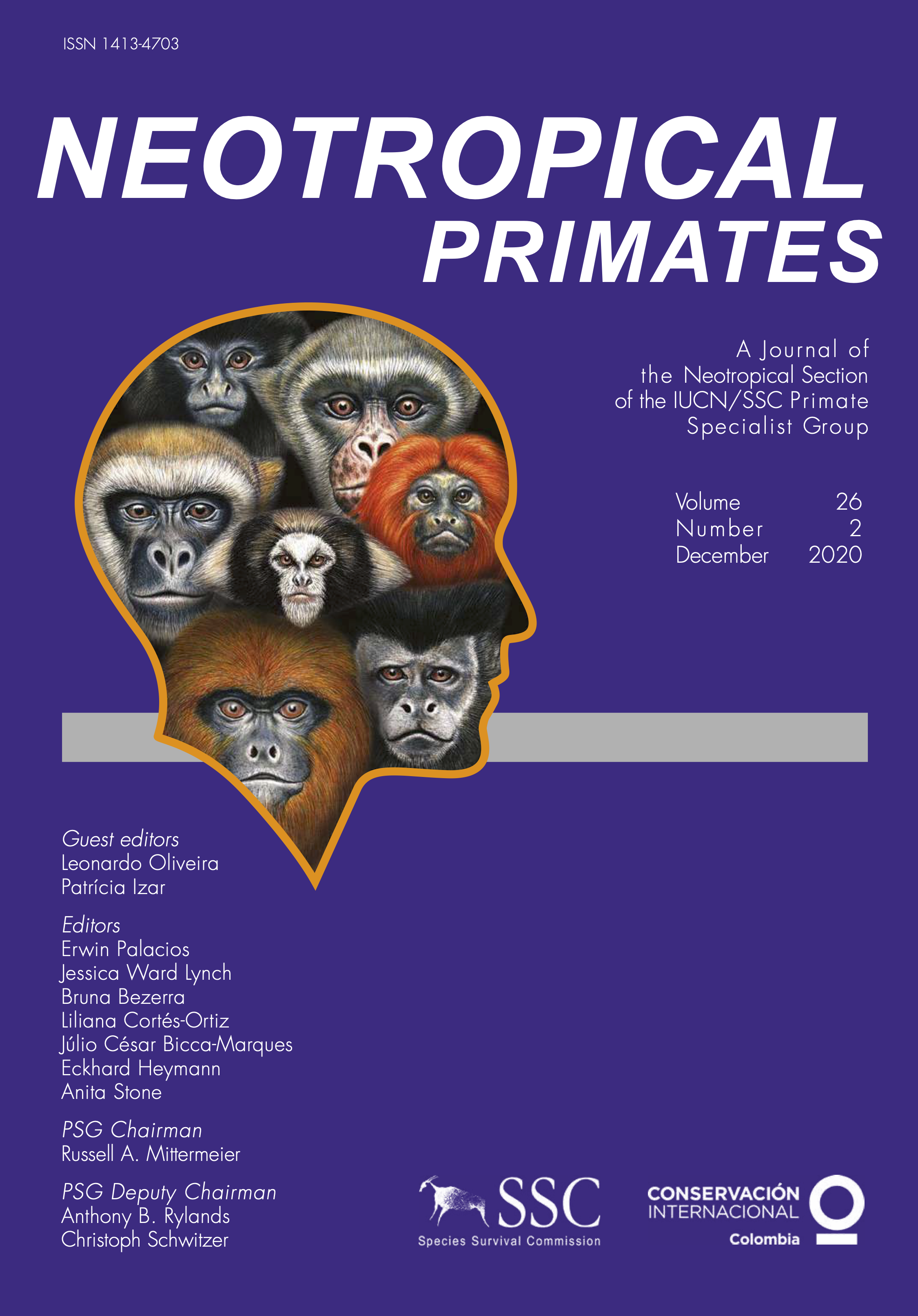Relato de caso envolvendo a translocação de uma fêmea de Brachyteles hypoxanthus (Primates, Atelidae) para um recinto semi-natural, como estratégia de conservação da espécie em Minas Gerais, Brasil
DOI:
https://doi.org/10.62015/np.2020.v26.54Keywords:
in situ management, ex situ management, translocation, morphophysiology, northern Muriqui, critically endangered speciesAbstract
The translocation of threatened primate species is an alternative that involves the rescue of isolated groups or individuals, and/or the strengthening of declining populations, with the aim of species conservation. The northern muriqui (Brachyteles hypoxanthus) is a critically endangered primate with a total population estimated at fewer than 1,000 individuals. The lack of connectivity among areas where the northern muriqui occurs promotes the isolation of populations and consequently hinders the migration of females in their search for a new group. Here, we present data about the translocation of an adult female, who was solitary and isolated in an Atlantic Forest fragment in Simonésia city, in Minas Gerais state, Brazil. This female was translocated to a semi-natural enclosure located in Comuna do Ibitipoca, Lima Duarte, MG. The capture occurred by chemical restraint using a Dan-Inject rifle (JM Standard model) with a Dan-Inject dart containing 1.5 mL of combination of Tiletamine/Zolazepam (Zoletil®) 5 mg/kg + Xylazine 2 % - 2 mg/ kg, with reinforcement of Ketamine 0.5 mL + Xylazine 10 % 0.1 mL. The animal was monitored for vital signs, with a physical examination, collection of biometrics and biological samples, and a microchip inserted for animal recognition. Capture and anesthesia occurred without complications. Hematological and physiological parameters showed changes, as expected for the capture process, and similar to the parameters found in other translocated individuals of northern muriqui. Our data contributes to knowledge about capture and chemical restraint of large-bodied Neotropical primates, including the development of a specific management protocol for the northern muriqui, as well as providing morphophysiological parameters for the species.

Downloads
Published
Issue
Section
License

This work is licensed under a Creative Commons Attribution-NonCommercial-ShareAlike 4.0 International License.


